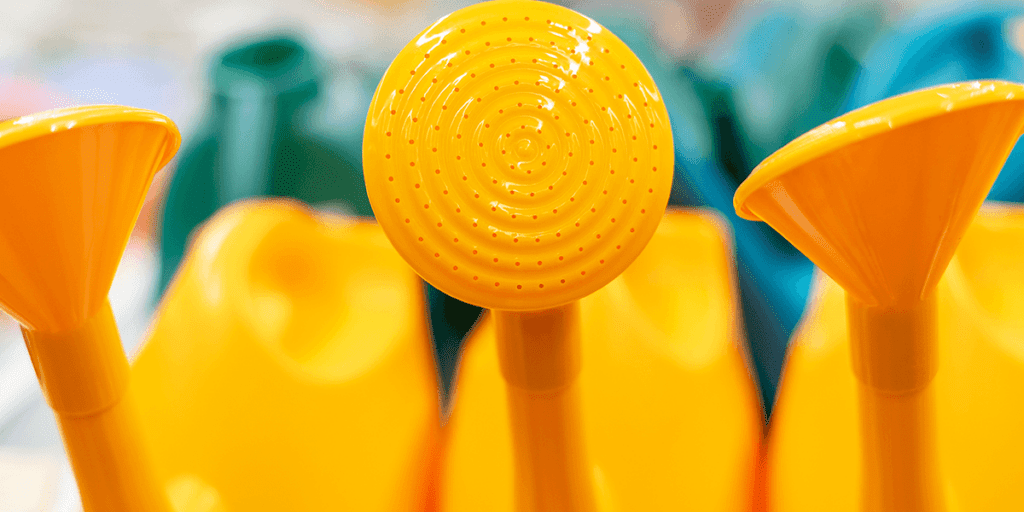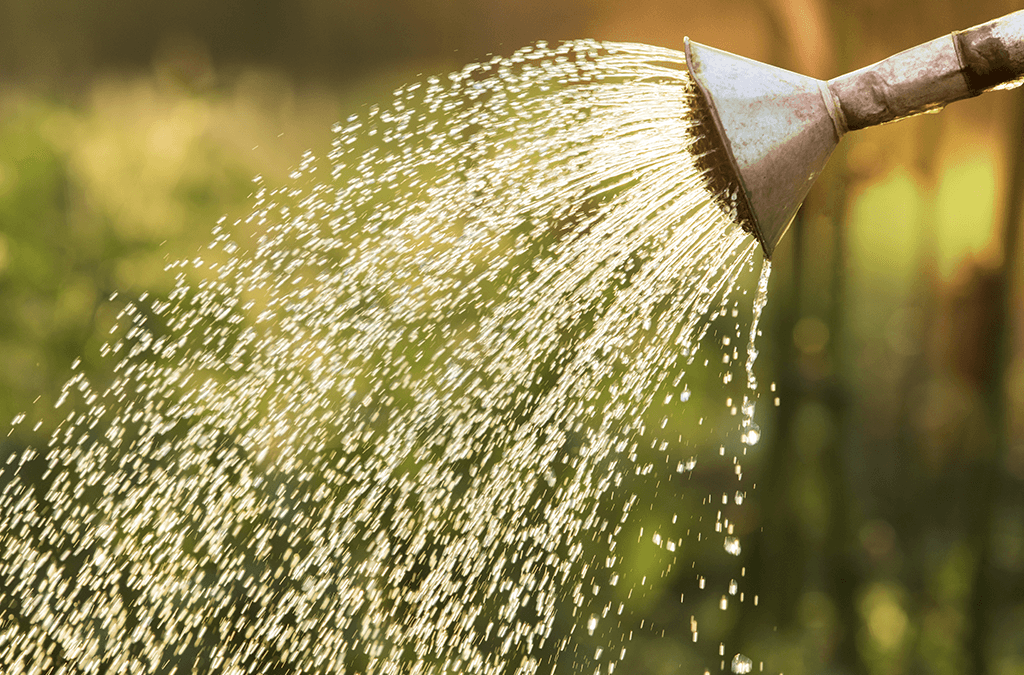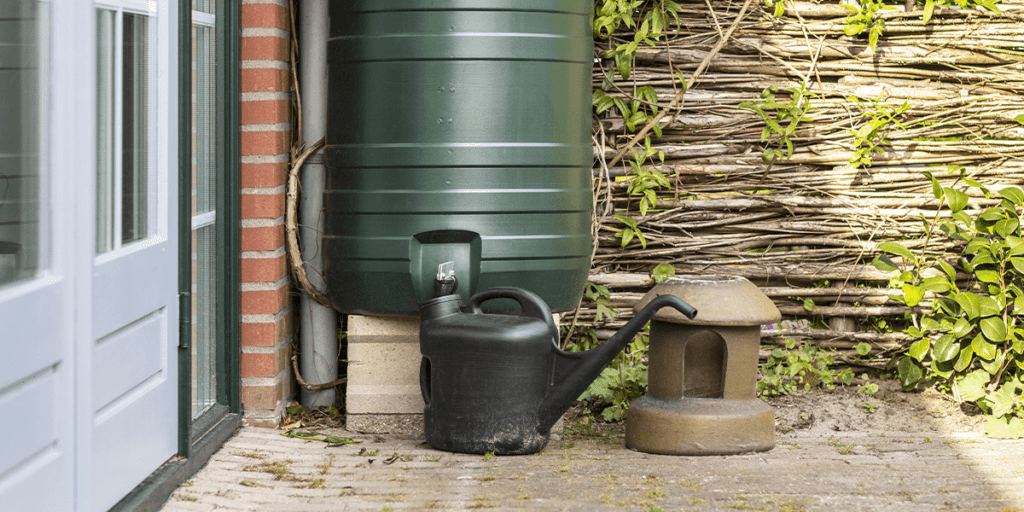We know the importance of watering as gardeners, but what about the watering can itself? Using the wrong type can turn this simple task into a chore. Fortunately, there are many designs out there. Once you understand them, you can purchase the best one for you and make watering a pleasant experience for you and your plants!

Watering Can Nozzles
The nozzle is what makes or breaks a watering can. It shapes how the water is delivered, but many people don’t realize that each nozzle has a specific purpose. Here are the different designs you’ll find:
- Pour: Cans with a single stream of water are best suited for houseplants. The single spout lets you pour water around the base of the plant without sprinkling the leaves or watering your floor. A pour nozzle is not ideal for seeds or seedlings, as the stream can easily flood them or break their fragile stems.
- Sprinkle: A sprinkle nozzle is best for watering seeds, seedlings, or vegetables out in the garden. It acts like a gentle shower that moistens the soil without damaging the plants. It’s also good for outdoor containers.
- Dual Purpose: Some nozzles have a special switch called a rosette which allows you to switch between a single pour and a sprinkle as needed. Others have a sprinkle head that you can unscrew and remove, which turns the spout into a single stream.
What Size of Watering Can Do I Need?
If you have small houseplants, a can with a small spout is better. It gives you the precision needed for a small pot. On the other hand, if you have a lot of containers on your deck, a big can may come in handy. With more carrying capacity, you won’t have to go back and forth from the faucet, and your watering will be faster.
Rule of thumb: the best size of a watering can is one that matches the size of your plants.
Leak-Free Watering Cans
If leaky nozzle heads are your pet peeve, opt for a watering can with one-piece construction. A single plastic or metal mold won’t have any seams that can leak. A can with a curved spout is also less likely to spill water as you carry it. In general, high-quality cans are more likely to remain leak-free.
The Best Watering Can Handles
Carry and pour—that’s how you’ll be handling the can, so you need a handle for both. Cans with two handles serve both purposes, as do those with a single grip that wraps around the top and back. Watering cans that are missing either the top or back handle can be less comfortable to use and harder to aim.
Is a Metal Watering Can Better than Plastic?
Both plastic and metal watering cans are equally good and useful, but they have a few slight differences.
- Plastic cans are lightweight and will last for decades, especially if they’re high quality plastic. However, UV rays and general wear-and-tear will damage them over time.
- Metal cans are more durable to bumps and scrapes and last for decades if they are galvanized or otherwise rust-resistant.
The main difference between materials is in aesthetics and the comfort of the handle, both of which are more of a personal choice.
If you’d like to try out watering cans yourself, find us at our garden centers in Bloomingdale and Carpentersville!
Platt Hill Nursery is Chicago’s premier garden center and nursery.



